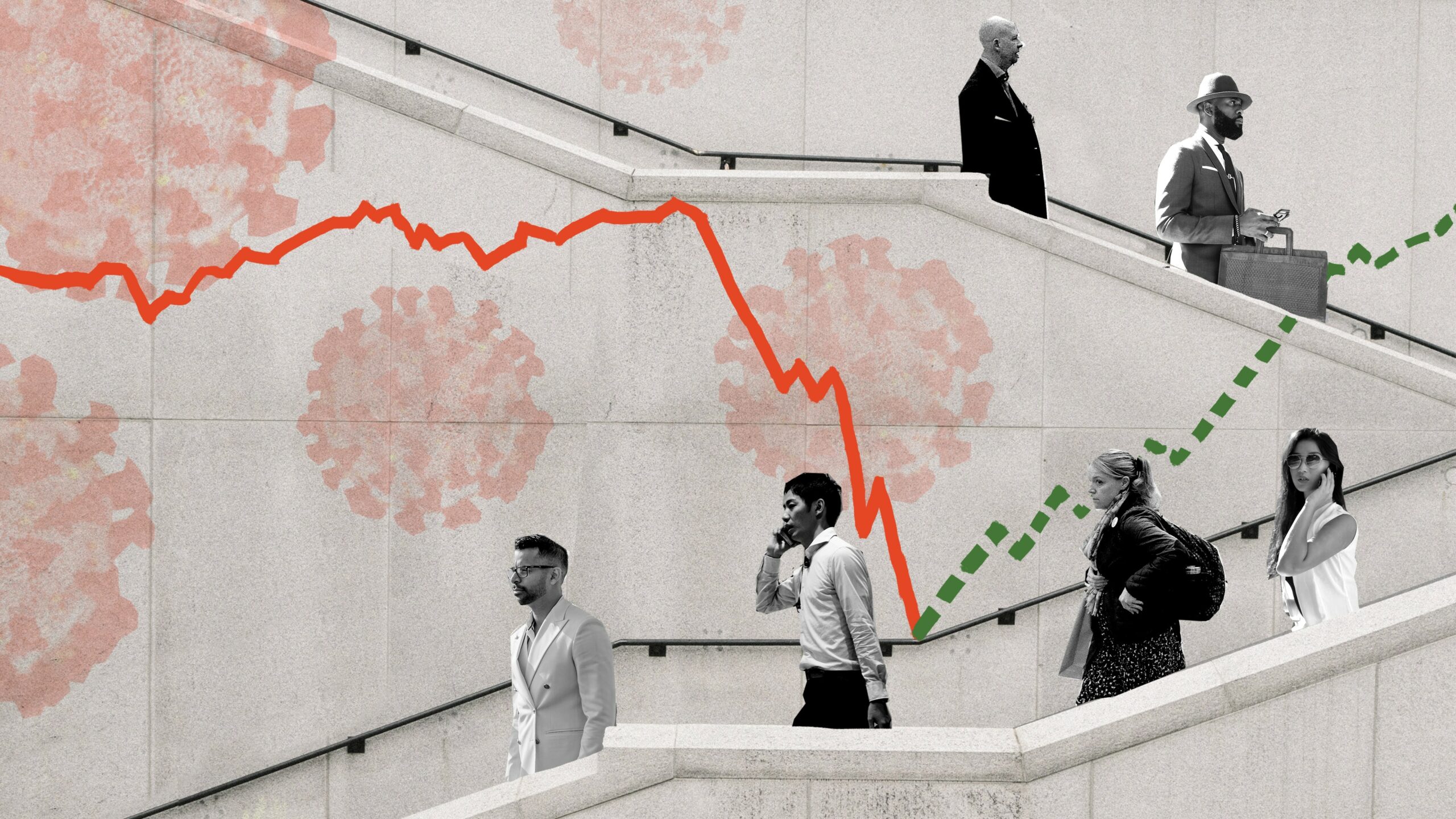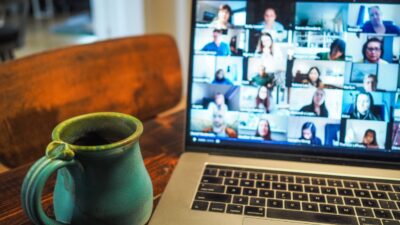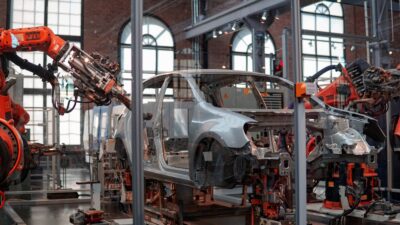Sandra Peter and Kai Riemer

The ideal worker on Corona Business Insights
How the COVID-19 pandemic makes visible the notion of the ideal worker; but will it change as a result?
As COVID-19 sets out to change the world forever, join Sandra Peter and Kai Riemer as they think about what’s to come in the future of business.
Shownotes
Our previous conversation around productivity and remote work on Corona Business Insights
The pandemic and the “ideal worker”
Americans’ workday has increased by 40%
Women are considering quitting their jobs due to work-family conflict related to COVID 19
Mike Seymour’s insights on remote working will remain a feature of our professional lives for months
Origins of the ideal worker norm
This episode is part of a podcast series covering what COVID-19 will mean for the business world, where we look at the impact on the economy, businesses, industries, workers and society. This is part of our ongoing coverage of the impact of COVID-19 on the future of business.
Follow the show on Apple Podcasts, Spotify, Overcast, Google Podcasts, Pocket Casts or wherever you get your podcasts. You can follow Sydney Business Insights on Flipboard, LinkedIn, Twitter and WeChat to keep updated with our latest insights.
Send us your news ideas to sbi@sydney.edu.au.
Dr Sandra Peter is the Director of Sydney Executive Plus and Associate Professor at the University of Sydney Business School. Her research and practice focuses on engaging with the future in productive ways, and the impact of emerging technologies on business and society.
Kai Riemer is Professor of Information Technology and Organisation, and Director of Sydney Executive Plus at the University of Sydney Business School. Kai's research interest is in Disruptive Technologies, Enterprise Social Media, Virtual Work, Collaborative Technologies and the Philosophy of Technology.
Share
We believe in open and honest access to knowledge.
We use a Creative Commons Attribution NoDerivatives licence for our articles and podcasts, so you can republish them for free, online or in print.
Transcript
This transcript is the product of an artificial intelligence - human collaboration. Any mistakes are the human's fault. (Just saying. Accurately yours, AI)
Intro From the University of Sydney Business School, this Sydney Business Insights.
Sandra And this is Corona Business Insights. I'm Sandra Peter.
Kai And I'm Kai Riemer.
Sandra And with everything that's happening, it's quite hard to understand what COVID-19 will mean for the business world. So in this series we unpack what it means for the economy, for business, industry, government, workers and society.
Kai And today we talk about how the COVID-19 pandemic might change what we know as the 'ideal worker'.
Sandra We've already tackled in previous episodes how office space and what offices look like, how that might change post COVID-19. We've also discussed remote work and issues of productivity and how that has been changed by the pandemic. So we thought it might be a good idea to have a look at how ideas of what an ideal worker is are being put to the test.
Kai So the idea of an ideal worker in the literature is an important one, because it is the tacit understanding that we hold of what is a normal kind of working. And the criteria are typically that the ideal worker is male. They work full-time in a stable job arrangement, location independent, so a strict separation between the work and the home. So the work is located in the office and the person is also able to travel or relocate. So a flexible, location independent, full-time available person.
Sandra This pretty much dates back to the industrial revolution and it reflects the fact that there was a breadwinner and a homemaker. And that's been quite stable for a very long period of time until about the 60s when women began entering the workforce in greater numbers. But the ideal of being in the office or working long hours and not having other commitments has been a fairly stable one.
Kai We will put some resources in the shownotes that give some academic background on where this concept is coming from. But in the office world, it originates in the 1950s when white collar work was organised on the industrialised production model, people in one location for a specific amount of time, always available. And over time this has been challenged, there have been a lot of discussions, of course, around flexibilization of work, on parental leave, on remote working or working from home, telework. All of these kind of developments always bounce up against the ideal worker, and are in fact derivatives that are always drawing on this ideal worker as the normal standard from which these are then deviations.
Sandra So we thought we'd have a closer look, because right now very few of us are working from the office. Most of us are working from home and balancing many other commitments, and working at odd hours.
Kai As work moves to a different location, the ideal worker concept might be challenged. There's an article in HBR, Harvard Business Review, which reports on a study that has shown that Americans workday has increased by 40 percent, which is roughly three hours a day, which means that these stable 9 to 5 disappears as the boundary between home and work vanishes through remote working.
Sandra But while these extended hours, and similar studies show that the same is true in Europe, while this challenges the idea of the location, through remote work, it also at the same time strongly reinforces the long working hours and the fact that the ideal worker is a dedicated worker who spends a lot of hours at work. And indeed a number of organisations have remarked that many of their workers are being as productive from home as they are from the office. This week, Westpac considers allowing some of its workers to permanently work from home. Twitter has announced that they will permanently allow people to, to work from home, not taking into account that it takes far more hours to produce the same amount of work as it does in the office.
Kai Which on a strict definition of productivity means that productivity is actually slowed down, productivity is actually worse because if the same output needs more amount of time, that productivity is actually slowed down as the same output needs more time investment. But of course, these kinds of investments, the time that people spend at home, are often invisible to companies. It is easier ignored when people work more at home than when they are actually physically available in the office. So it becomes much more invisible.
Sandra COVID-19 might also disproportionately affect women more than men due to commitments that often are taken up by women such as child caring and caring for the house, caring for the home, cooking. Women disproportionately consider quitting their jobs to be able to take up these responsibilities. A recent survey showed that 14 percent of women are considering quitting their job due to work/family conflicts that are related to the COVID-19 crisis. So this might further go into reinforcing gender stereotypes at work.
Kai So for families, and that is increasingly more the case where we have two breadwinners, where both partners are working and looking after children, with children having to be at home, being home-schooled, at real conflict arises where everything has to be done together in the household. It is oftentimes the woman who will then make the step back into the carer role. So from a gender point of view, we might actually make a step back and reinforce those gender roles rather than move away from the ideal worker image, at least when it comes to gender.
Sandra There has been one more challenge that's been discussed widely in the media lately around the ideal worker and how professional the ideal worker is, with many saying that it is now much more acceptable to wear casual clothes, or it's acceptable to be interrupted by children, by pets. For the environment to reflect the fact that you're doing this from your home and not necessarily from a home office, and that this will continue and will lead to some of the typical requirements around what online meetings look like, being more relaxed.
Kai And while that is certainly the case right now, we need to be reminded that this is not normal circumstances. We are very much in a situation that is not normal and it remains to be seen what will happen as we move forward, whether there will be a professionalisation, whether it will still be acceptable in a few weeks or months’ time when people are still working from home, or for those people who are still working from home when half the worker cohort has moved back to the office, whether it is still acceptable that those working at home have children in the picture or the dog, that they are not properly dressed or have a cluttered background, or whether it will be expected from those who are working at home that they fit in with the ideal worker, the normal work environment and professionalise their surroundings when they are on a Zoom call.
Sandra And here we're not even mentioning that in certain parts of the world, working from home is not really an option to begin with. And here we're thinking of places where, for instance, corporate culture is a huge obstacle, in places like Japan, places where technology is a huge obstacle, where people do not rely on email, but rather on faxes, and on printed documents, or indeed where the home isn't the place from which you could do remote work at all. Many places in India do not have sufficient Internet connectivity that allows for a fluid transition to tele-work or to remote work. Japanese houses are in many cases not equipped to have a home office. 99 percent of new apartments in Tokyo, for instance, are less than 100 square meters with no space to actually do this, once you are in an environment where you have a family and children or pets.
Kai And so while currently, the image of the ideal worker might be contested, with some aspects being reinforced like gender or the availability to work long hours. Other aspects are now up for grabs, are being re-thought, like the location where work happens. The strong separation between work and home might be vanishing somewhat. It remains to be seen how much of this will be institutionalised going forward, and whether there will actually be a lasting rethinking of some of those aspects of the ideal worker. And it will be up to employers and companies to do their bit to move away from the ideal worker image of the industrialised world.
Sandra One thing that companies can do is actually think about seeing this crisis as an opportunity to bring about the changes that they want for their organisations.
Kai And this is where we want to leave it today. As always, we will include the materials in the shownotes.
Sandra Until next time, this was Corona Business Insights.
Kai Thanks for listening.
Sandra Thanks for listening.
Outro From the University of Sydney Business School. This is Sydney Business Insights, the podcast that explores the future of business.
Close transcript















